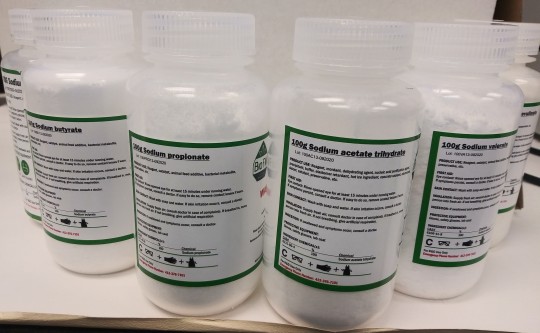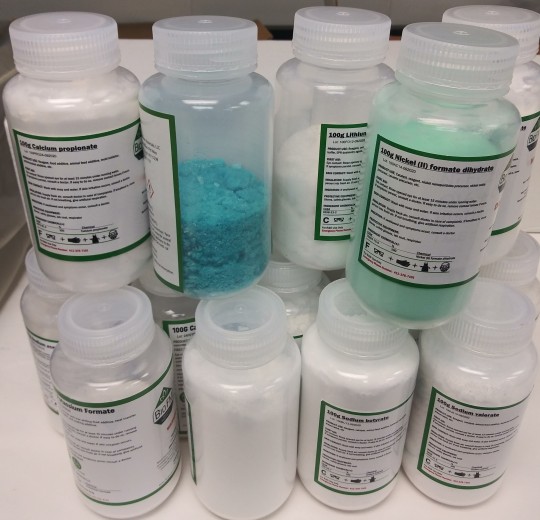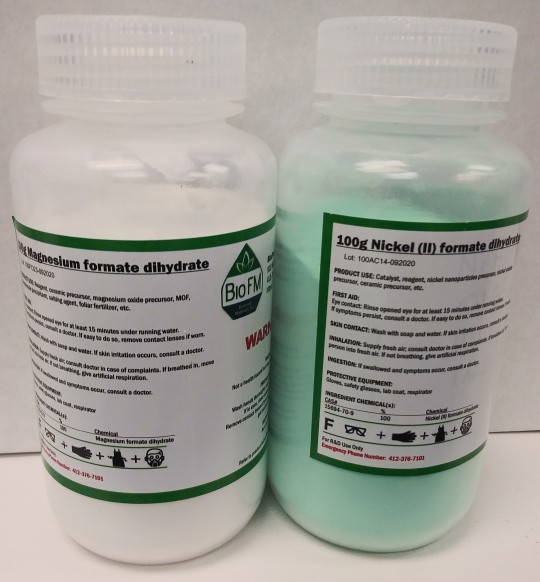Text
Interesting Decomposition Behavior of Metal Acetic Acid Salts
FT-IR is an important tool for tracking the thermal decomposition profile of metal acetates. Using FT-IR, scientists established three molecular transformations that are generally associated with
dehydration at 80-130C,
formation of carbonate (or oxalate?) at 105-230C, and
final residue formation (metal, oxide) at 100–440C.
Different metals show different molecular speciation as follows:
Sodium and potassium acetates decompose first to an oxalate, which decomposes and yields the metal carbonate.
For barium acetate the corresponding carbonate occurs directly without an intermediate.
Calcium acetate decomposes to the carbonate over a crystalline anhydrous modification.
Magnesium, lead, nickel, and cadmium acetates form an intermediate basic salt which decomposes at higher temperatures to give the metal, while magnesium acetate yields the corresponding metal oxide.
Copper acetate affords a pure metal as final product where the decomposition proceeds via a crystalline modification of the anhydrous acetate as the intermediate analogous to the calcium.
Cobalt and silver acetate decompose to the pure metal without the formation of an intermediate.
Zinc and manganese acetates afford crystalline acetate intermediates which decompose to the corresponding oxides.
For most metals, it should be noted that the carbonates are most common thermal decomposition intermediates which be can be transformed into the corresponding oxides at higher temperatures.
#metal acetates#acetate#acetate decomposition#sodium acetate#potassium acetate#barium acetate#magnesium acetate#calcium acetate#lead acetate#nickel acetate#cadmium acetate#copper acetate#cobalt acetate#silver acetate#zinc acetate#manganese acetate
0 notes
Text
Carboxylate-based Wood Preservatives
Copper naphthenate is an above-ground, oil-based wood/lumber preservative. It’s use and effectiveness has been known since the early 1900s. Lumber treated with copper naphthenate has a distinctive bright green color that weathers to light brown. Copper naphthenate is listed in AWPA Standards for treatment of major softwood species that are used for a variety of wood products.
0 notes
Text
The Potential Impact of Zinc Supplementation on COVID-19 Pathogenesis
“ The fact that zinc deficiency is responsible for 16% of all deep respiratory infections world-wide provides a first strong hint on a link of zinc deficiency with the risk of infection and severe progression of COVID-19 and suggests potential benefits of zinc supplementation... Decades of research have shown that zinc lozenges can shorten colds by 20% to 40%...” Although zinc gluconate is the best known source of zinc and zinc ions for lozenges used in treating common colds, zinc acetate merits special attention.
0 notes
Text
The Formate
The formate (HCO2-) group is one of the smallest organic linkers that can be used to build porous metal organic frameworks (MOFs). The four-atom monoanionic linker is known to adopt various coordination modes thanks to the smallest possible side group on the carboxylate carbon.
0 notes
Text
Chemistry Sustains Us
Chemistry contributes in many ways to the products and services that consumers and industries use in their day-to-day activities. From the food we eat, clothing, houses, cars, etc. For instance, a car is built upon 340 pounds of plastics and polymers composites and over 280 pounds of rubber, textiles and coatings. From the urethane foam seat cushioning to nylon airbags to windshield wiper fluids, a car’s performance and safety depend on thousands of products of chemistry.
1 note
·
View note
Text
The need for safer cosmetic additives
@LUXIDERS "The first step is learning to detect the most common toxic substances found in the cosmetic industry, and which should be avoided if we want to a have a 100% healthy skin."
0 notes
Link
From a chemical to a deadly pandemic
0 notes
Text
Short chain carboxylic acid salts, esters, and ionic liquids
Formic, acetic, propionic, butyric, valeric, and levulinic acids are short chain fatty acids. Salts and esters of these fatty acids are widely used in the chemical, food, cosmetic, agricultural, fertilizer, pharmaceutical, polymers, biopolymers, coatings, adhesives, and beverage industries owing to their various functional properties.
#fatty acid ester market#short chain fatty acid#formate#acetate#propionate#butyrate#valerate#levulinate
0 notes
Photo

Levulinate, valerate, butyrate, propionate, acetate, and formate Sodium salts
0 notes
Photo

Formate, acetate, propionate, butyrate, valerate, and levulinate salts
0 notes
Photo

Precursors for Magnesium-nickel salts
such as nickel-magnesium oxide catalysts
1 note
·
View note